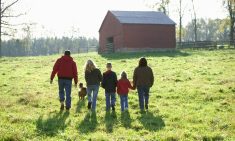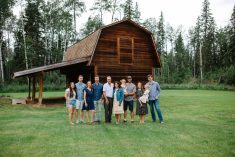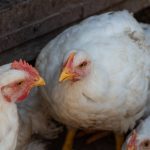Farm succession is never easy, but for the Johnston family, bringing the next generation into the dairy business has meant extra challenges. You might even say it has meant miles and miles of challenges.
After their family had farmed near Brampton for 170 years, Frances and James Johnston figured the time had come. Toronto was looming over their fencerows, coming close enough so that while other Canadian farmers pull onto quiet country roads to go to town, the Johnstons had to dart into five choked lanes of roaring traffic. And where other farmers can look across to their farming neighbours, the closest yard the Johnstons saw from their doorstep was a rail yard and distribution centre.
Read Also
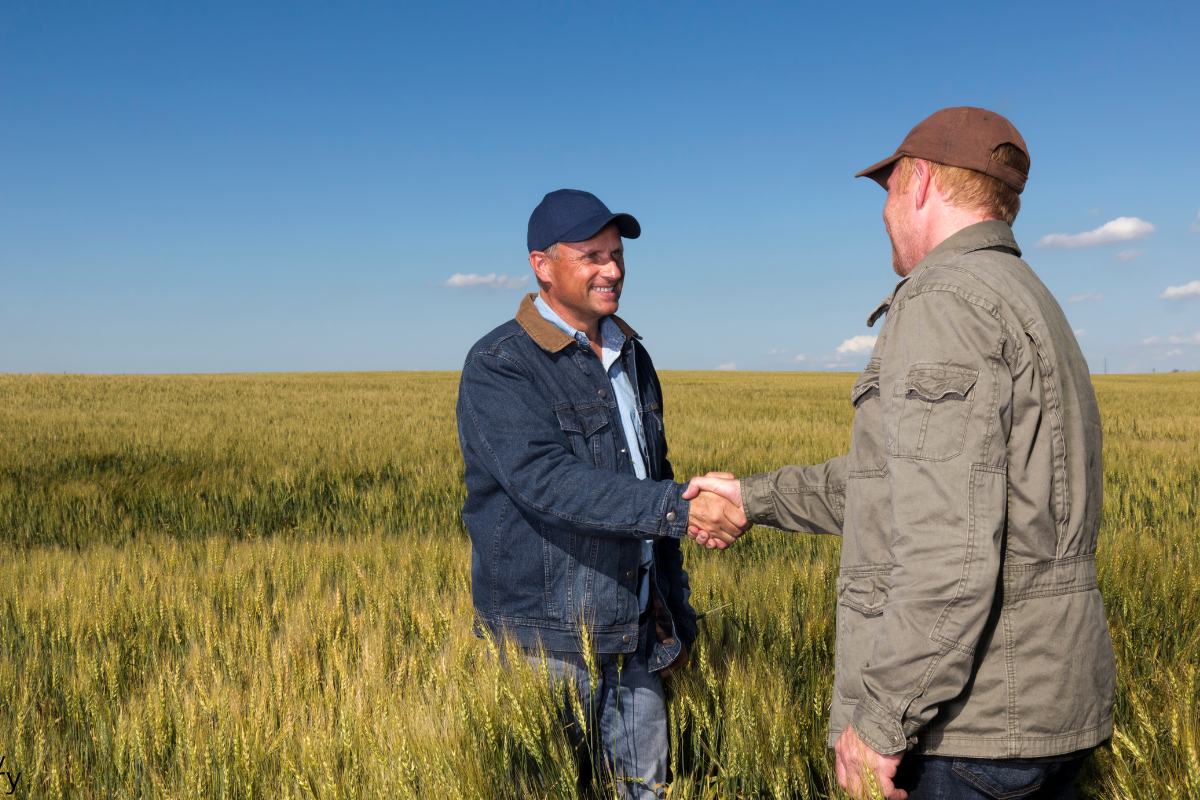
Are you ready for farm succession?
What motivates some farmers to make a succession plan while others don’t seem worried.
But those weren’t the only kinds of population pressure the family was facing.
Son Graham, daughter Mary Ann and her husband, Joe Doré, all wanted to be involved full time in the dairy operation, not to mention that Graham’s wife, Amanda, a medical imaging technologist at St. Michael’s Hospital in Toronto, and a third sibling, Claire, who works for a John Deere dealership in Nobleton, currently help out on weekends and wanted to maintain their connection to the farm too.
And on top of that there was the barn, which had last been upgraded in the early 1990s and would soon need more work.
With the evidence mounting, the family all agreed. It would make more sense to relocate and build new.
The question is, how do you go from a decision like that to actually carrying it out? What are the skills that will get you through it? What are the parts that are harder than you think?
For the Johnstons, the questions have some fairly simple answers, although that doesn’t mean that the solutions were always easy.
What was the most important skill? Hands down, it was — and continues to be — communication.
What was harder than they expected? Again, the asnwer is straightforward. In a nutshell, the whole process takes longer than you think — you can probably think in terms of five years to make a full change.
But there were victories too, such as agreeing on a name that they would all take as a sign that they had made the transition a success, keeping both the farm and the family intact, all wrapped up in a few simple words.
In fact, coming up with the name for the new farm was the hardest part of the whole process, says Graham with a chuckle. “We were looking for something that represented our family’s long history of farming in Canada, but also something that would tie it to the new farm.”
The eventual name — Heritage Hill Farm — scored on all those levels, with a view from the back of the barn that stretches for miles.
- More Country Guide: Take a detour?
If the selection of that name capped the process, what it all began with was a family meeting with everyone sitting down together to develop a checklist of what they would want in a future property. Mary Ann says that while they recognized they could go anywhere in the world, they decided they wanted to stay in Ontario to be near family.
Then, while the family looked for property and made plans for a new barn, Mary Ann worked for three years as a herdsperson in a free-stall dairy barn near Tavistock — an hour and a half west of Brampton in the heart of Ontario’s biggest dairy county — and Joe worked in service for Advanced Dairy Systems, a half-hour north of her at Wellesley. Both gained valuable experience they could put to use planning the new barn. They also did their research and visited many other barns too.
Communication flow was crucial. With Frances, James, Graham and Claire back on the home farm and Mary Ann and Joe living in Stratford, decisions for the new barn were made via email. “This way we could all have input and there was a paper trail for discussions,” explains Mary Ann.
Eventually they found a farm near New Dundee that met their criteria. Barn construction began in August 2010 and was completed in March 2011, with Joe and Mary Ann quitting their jobs so they could help during construction.
When it comes to making decisions, James has the final say but he carefully considers everyone’s input, says Mary Ann. For example, while James preferred building a tie-stall barn, he agreed to a free-stall design because that is what the others wanted.
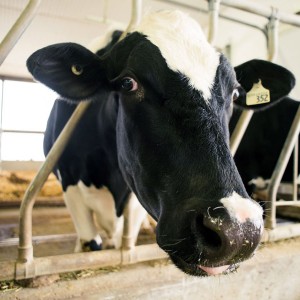 All of the cows adjusted well to the new barn but there was tension between the partners during the transition period. Mary Ann uses a boat analogy to try to explain what was happening amongst the five partners during this time. “It was like Mom, Dad and Graham were already in the boat but Joe and I were swimming in the water beside the boat. When we tried to get in it was a little rocky.” Now that everyone has adjusted, it’s smooth sailing again, she says.
All of the cows adjusted well to the new barn but there was tension between the partners during the transition period. Mary Ann uses a boat analogy to try to explain what was happening amongst the five partners during this time. “It was like Mom, Dad and Graham were already in the boat but Joe and I were swimming in the water beside the boat. When we tried to get in it was a little rocky.” Now that everyone has adjusted, it’s smooth sailing again, she says.
One of the secrets to getting along is to realize that everyone is different and that your own way of doing things is not the only way, says Joe.
It also helps to keep in mind that everyone wants the same outcome, he says. For all of them, the farm comes first.
Joe, who grew up in the suburbs of Montreal, spent a summer working for one of the Brampton farm neighbours to see if he would like dairy farming. “I fell in love with it,” he says.
When it comes to getting along, it’s also important to understand that everyone has different communication styles, says Mary Ann who recommends family members go through counselling to learn good communication skills. For example, it’s a bad idea to start a sentence with “You never…” and it’s important to say “thank you,” she says.
Mary Ann says she has come to realize that she is more verbal while the guys tend to process things first before they’ll talk about it. “I just have to accept that we’re different,” she says.
“Making assumptions is one of the worst things you can do,” continues Mary Ann. “We’re all getting better at talking about the things that are bothering us.”
As an only child, in the early days Joe found it alarming to watch Graham and Mary Ann interact at times. “One minute they’d be arguing and the next they’d be getting along great,” he recalls. Not having any siblings, he’d never seen this kind of dynamic before, he explains.
Now that they’ve been in the new barn for three years, they’ve developed systems that work for them, especially with multiple people working in the barns.
On weekdays Graham, Joe and Mary Ann are all in the barn for chores. They’ve each carved out complementary roles. While Mary Ann milks, Joe runs the skid steer and Graham feeds the calves. Graham makes breeding decisions with input from James. Joe looks after maintenance and Mary Ann does the bookkeeping. Cropping decisions are made by James, Graham and Joe with the help of neighbouring farmers — the Sherks, the McNabbs and Dan Shantz.
Since moving to the new farm, Joe and Mary Ann welcomed a new addition to the family. Two-year-old Nadine likes to help around the barn with the cleanup, says Mary Ann.
Being able to take some time off from chores is one of the advantages of farming together. One weekend Joe and Mary Ann do the milking, the next Graham will do the chores with the help of either Claire or Amanda. When not in the barn, they are all able to relax. “Working by ourselves on the weekend makes us appreciate having the help the rest of the time,” says Mary Ann.
When planning the barn they intentionally included a kitchen so they could have breakfast meetings after morning chores. “This was something they had at the farm where I worked,” explains Mary Ann. They each take turns stocking the fridge.

Strategically placed whiteboards throughout the barn help them to keep track of what needs to be done. In the office there is a whiteboard with daily and monthly to-do lists. In the parlour there’s another whiteboard for milking communications such as information on fresh or sick cows.
In the vet room is another whiteboard with information on breeding and foot health. A smaller whiteboard has information on sick cow treatments, a list of vet supplies needed and a barn maintenance schedule. The final whiteboard shows feeding information for the calves in the corresponding hutches, numbered using ear tags.
The Johnstons are very pleased with the location of the new farm where there is a strong farming community. The farm equipment stayed back in Brampton where the family still owns land so they have contracted with neighbouring dairy farmers for custom work. They are also centrally located to get quick service from their milking equipment suppliers.
At age 65, James is content to let the younger generation take over the milking. He is also turning over more of the decision-making to the younger generation to prepare them to take over.
With this in mind, the five partners have started succession discussions to map out the transfer of ownership. While it can be hard to talk about the tough stuff, by building on the communication skills they’ve developed while planning, building and moving the herd to a new barn an hour’s drive from the original farm, this family is well positioned to meet this challenge.
Communications also facilitated using the move to improve the farm’s productivity. Although there is room for 94 cows in the new barn they are currently only milking 60 cows due to quota restrictions. Equipped with a BouMatic Double-8 Herringbone milking parlour, they are set up to handle the extra cows. They chose the parlour over a robotic milking system because they like to milk cows and feel this allows them to keep a closer eye on the cows. They are expanding as they are able to purchase more quota but with the cap in place it’s a slow process, explains Mary Ann.
In fact, the whole barn project was a stressful time, but it was also deeply satisfying, recalls Mary Ann.
Cow comfort was a high priority for the new barn. The family is very proud of their purebred Holsteins with two-thirds of the herd classified as Very Good or Excellent under the Jameston Holsteins prefix. The Johnstons also placed a great emphasis on energy and water conservation in the new barn.
In June of 2013 the family got a chance to welcome the public to the new farm and they took it, hosting the first-ever Ontario Breakfast on the Farm sponsored by Farm and Food Care Ontario. Some 2,000 people enjoyed a free breakfast and toured the barn.
Growing up so close to the city meant that many of the Johnstons’ friends were not from farms. “We are used to talking to all of our city friends and family about farming and understand the concerns of the consumers; we wanted to make sure our new farm addressed those concerns,” explains Mary Ann. “We’re very proud of our new facility.”





